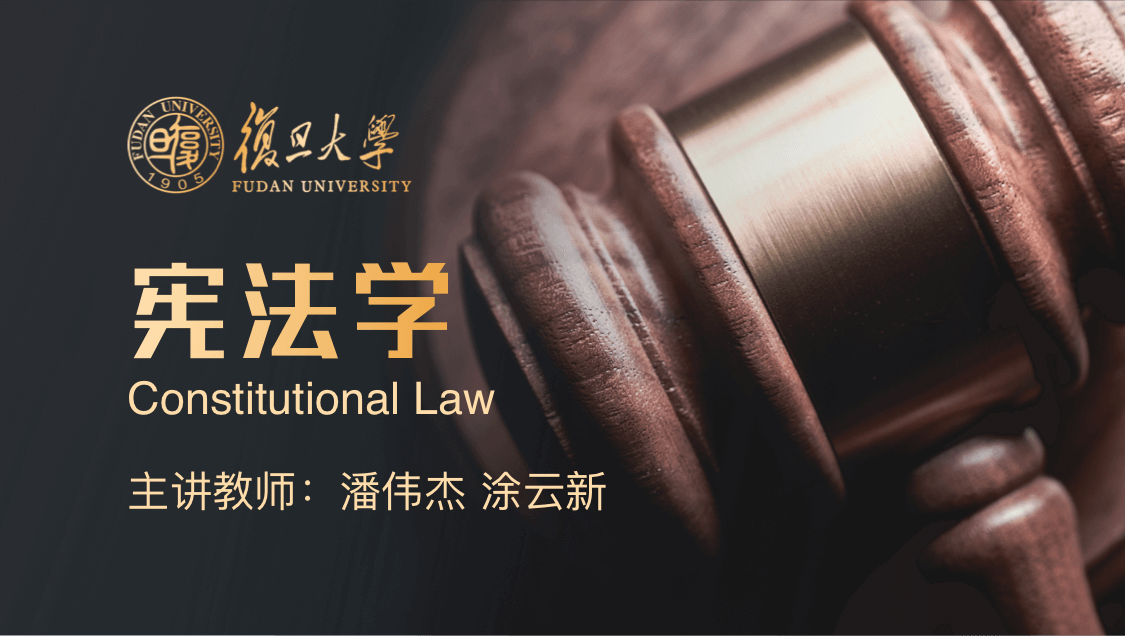
当前课程知识点:Fundamentals of Inorganic Materials Science > 4 Melt and glass > 4.6 The typical glass > 4.6 The typical glass
返回《Fundamentals of Inorganic Materials Science》慕课在线视频课程列表
返回《Fundamentals of Inorganic Materials Science》慕课在线视频列表
同学们好,
前几节我们学习了玻璃的通性、形成和结构,
今天我们来学习本章的最后一节,常见玻璃。
常见的氧化物玻璃主要有两类,
硅酸盐玻璃和硼酸盐玻璃。
其中硅酸盐玻璃由于成本低、化学稳定性良好、
硬度高、生产方法简单而被广泛应用。
硅酸盐玻璃由二氧化硅,
碱金属氧化物、碱土金属氧化物等组成。
随着碱性氧化物的引入,
体系的氧硅比增加,
玻璃的三维网络骨架逐渐破坏,
由架状向层状、链状、
直至岛状变化,
同时玻璃的性能也会改变。
为了描述玻璃的结构,
我们建立了四个不同的结构参数。
分别是R,氧硅比,
即玻璃中氧离子总数与网络形成离子总数之比。
X ,每个多面体中平均非桥氧个数。
Y,每个多面体中平均桥氧个数。
Z,每个多面体中氧离子平均总数
(一般硅酸盐玻璃中为4,硼酸盐玻璃中为3)。
这四个参数中存在一定关系:
X + Y = Z,X + Y/2 = R。
由此可知,
只要知道两个结构参数就可以得到另外两个。
同时,还可用X和Y求出
玻璃中的非桥氧百分数和桥氧百分数。
接下来,
我们举几个例子计算一下结构参数。
例如,
水玻璃是由氧化钠和氧化硅
摩尔比一比一组成的。
该玻璃中Z等于4,
R中分子中的氧来源于氧化钠和氧化硅,
分母来源于氧化硅。
按摩尔比计算可得R等于3,
结合公式可得X和Y都等于2。
再以10%molNa2O∙8%molAl2O3∙82%molSiO2组成的玻璃为例。
当玻璃中的组成比较复杂时,
首先需要判断各类氧化物的作用。
该玻璃中,氧化钠为网络变性体,
不参与网络形成;
氧化硅为网络形成体,
构成玻璃网络,
因此Z等于4。
氧化铝为中间体,
他在玻璃结构中的位置需要进一步判断。
判断方法如下:
如果(R2O+RO)/Al2O3大于等于1,
则Al3+为网络形成离子;
如果 (R2O+RO)/Al2O3小于1,
则Al3+为网络变性离子。
如果为网络形成离子,
铝离子的含量要计入R值的分母中,
如果是网络变形离子,
R值的分母中不考虑铝离子的含量。
同时结合分子式,
可以计算出各种氧化物提供的阳离子数量。
进而计算出R,求出X和Y。
该例中
R等于2.02,X = 0.04,Y = 3.96。
此外,Y是玻璃的重要结构参数。
玻璃的很多性质取决于Y值。
Y<2时硅酸盐玻璃就不能构成三维网络。
而在形成玻璃范围内,Y增大网络紧密,
强度增大,粘度增大,
膨胀系数降低,电导率下降。
相反的,
Y下降网络结构疏松,
网络变性离子的移动变得容易,
粘度下降,
膨胀系数增大,
电导率增大。
不同组成的玻璃,只要Y值相近,
玻璃就具有相似的性质。
最后,
我们再对比一下硅酸盐玻璃与硅酸盐晶体。
他们之间的差异主要体现在四方面,
第一,晶体中[SiO4]排列是严格有序的,
而在玻璃中则是无序排列的。
第二,晶体中R+或R2+阳离子占据点阵的固定位置;
玻璃中则统计地分布在空腔内,
平衡非桥氧的负电荷。
第三,晶体中只有半径相近的阳离子能发生互相置换;
玻璃中网络结构容易变形,
只要遵守静电价规则,不论离子半径如何,
网络变性离子均能互相置换。
第四,晶体中一般组成是固定的,
且符合化学计量比例(除固溶体外);
而玻璃中,只要在形成玻璃的组成范围内
氧化物可以以任意比例混合。
这些差异说明
玻璃的化学组成、结构
比晶体有更大的可变动性和宽容度,
所以玻璃的性能可以作很多调整,
使玻璃品种丰富,有十分广泛的用途。
另一类常见氧化物玻璃是硼酸盐玻璃。
B2O3是硼酸盐玻璃中的网络形成体,
B2O3也能单独形成氧化硼玻璃。
按无规则网络学说,
纯B2O3玻璃的结构可看成由[BO3]三角体
(扁三角锥体,几乎是三角形)
无序相连而组成的向两度空间发展的网络。
B2O3玻璃的层之间是分子力,
是一种弱键。
所以B2O3玻璃软化温度低(450℃),
表面张力小,化学稳定性差
(易在空气中潮解),热膨胀系数高。
一般来说,
纯B2O3玻璃实用价值小。
但B2O3是唯一
能用来制造有效吸收慢中子的氧化物玻璃,
而且是其它材料不可取代的。
B2O3与R2O、RO等配合
才能制成稳定的有实用价值的硼酸盐玻璃。
当B2O3中加入R2O、RO时会出现“硼反常”。
我们已在之前的小节中学习了这一现象,
这里不再做详细介绍。
最后,大家了解一下硼酸盐玻璃的应用。
一,硼酸盐玻璃可有效吸收慢中子,
在核工业中有重要用途。
二、硼酸盐玻璃对于碱金属(Na、Cs)蒸汽稳定,
可作为含Na和Cs的放电灯灯罩材料。
三、特种硼酸盐玻璃的另一特性是X射线透过率高,
可作为X射线管小窗的材料。
四、硼酸盐玻璃电绝缘性能好且易熔,
常作为玻璃焊剂或粘结剂。
五、硼酸盐玻璃分相,
可使玻璃发生乳浊。
大家在今后的选材或材料组分设计时,
可以根据需要选择合适的玻璃制品。
好,这就是熔体和玻璃体这一章
大家需要掌握的主要内容,
谢谢!
-Test for chapter 1
-2.1 Type of defect
-2.2.1 The expression methods of point defects
--2.2.1 The expression methods of point defects
--2.2.1 The expression methods of point defects
-2.2.2 The rules for writing of defect reaction equation
--2.2.2 The rules for writing of defect reaction equation
--2.2.2 The rules for writing of defect reaction equation
-2.3 Calculation of thermal defect concentration
--2.3 Calculation of thermal defect concentration
--2.3 Calculation of thermal defect concentration
-2.4 Non-stoichiometric compounds
--2.4 Non-stoichiometric compounds
--2.4 Non-stoichiometric compounds
-Homework for chapter 2
-Test for chapter 2
-3.1 The classification of solid solutions
--3.1 The classification of solid solutions
--3.1 The classification of solid solutions
-3.2 Substitutional solid solution
--3.2 Substitutional solid solution
--3.2 Substitutional solid solution
-3.3 Interstitial solid solution
--3.3 Interstitial solid solution
--3.3 Interstitial solid solution
-3.4 The research method of solid solutions
--3.4 The research method of solid solutions
--3.4 The research method of solid solutions
-3.5 Questions for crystal imperfection and solid solution
--Questions for crystal imperfection and solid solution
-Homework for chapter 3
-Test for chapter 3
-4.1 Melt structure
-4.2 The properties of the melt
--4.2.1 The properties of the melt_viscosity
--4.2.2 The properties of the melt_surface tension
--4.2 The properties of the melt
-4.3 The characteristics of glass
--4.3 The characteristics of glass
--4.3 The characteristics of glass
-4.4 The formation of glass
--4.4.1 The formation of glass_kinetics conditions
--4.4.2 The formation of glass_crystal chemical conditions
-4.5 The structure of glass
-4.6 The typical glass
-4.7 Questions for melt and glass
--Questions for melt and glass
-Test for chapter 4
-5.1 Phase equilibrium in silicate systems
--5.1 Phase equilibrium in silicate system
--5.1 Phase equilibrium in silicate system
-5.2 One-component system phase diagram
--5.2 One-component system phase diagram
--5.2 One-component system phase diagram
-5.3 Applications of one-component diagrams
--5.3 Applications of one-component diagrams
--5.3 Applications of one-component diagrams
-5.4 Binary diagrams
--5.4.1 Binary diagram with eutectic point
--5.4.2 Binary system with a congruent melting compound and one with an incongruent melting compound
--5.4.3 Other five types of phase diagrams of binary systems
-5.5 Applications of binary phase diagrams
--5.5 Applications of binary phase diagrams
--5.5 Applications of binary phase diagrams
-5.6 Ternary diagrams
--5.6.1 Representation of ternary system composition
--5.6.1 Representation of ternary system composition
--5.6.2 Three-dimensional state diagram and plane projection diagram of a simple ternary system
--5.6.2 Three-dimensional state diagram and plane projection diagram of a simple ternary system
--5.6.3 (1) Basic types of ternary phase diagrams
--5.6.3 (2) Basic types of ternary phase diagrams
--5.6.3 (3) Basic types of ternary phase diagrams
--5.6.3 Basic types of ternary phase diagrams
-5.7 Applications of ternary phase diagrams
--5.7 Applications of ternary phase diagrams
--5.7 Applications of ternary phase diagrams
-5.8 Research methods of phase equilibrium
--5.8 Research methods of phase equilibrium
--5.8 Research methods of phase equilibrium
-5.9 Questions for phase equilibria
--Questions for phase equilibria
-Homework for chaper 5
-Test for chapter 5
-6.1 Overview of diffusion
-6.2 The kinetic equations of diffusion
--6.2 The kinetic equations of diffusion
--6.2 The kinetic equations of diffusion
-6.3 The thermodynamic equation of diffusion
--6.3 The thermodynamic equation of diffusion
--6.3 The thermodynamic equation of diffusion
-6.4 Diffusion mechanisms and diffusion coefficient
--6.4 Diffusion mechanisms and diffusion coefficient
--6.4 Diffusion mechanisms and diffusion coefficient
-6.5 Diffusion in solid
-6.6 Factors affecting diffusion
--6.6 Factors affecting diffusion
--6.6 Factors affecting diffusion
-6.7 Questions for diffusion
-Homework for chaper 6
-Test for chapter 6
-7.1 Overview of solid state reactions
--7.1 Overview of solid state reactions
--7.1 Overview of solid state reactions
-7.2 Kinetic equation of solid state reaction
--7.2 Kinetic equation of solid state reaction
-7.3 Factors affecting the solid state reaction
--7.3 Factors affecting the solid state reaction
--7.3 Factors affecting the solid state reaction
-Homeword for chapter 7
-8.1 The categories of phase transformation
--8.1 The categories of phase transformation
--8.1 The categories of phase transformation
-8.2 Crystallization
--8.2.1 Crystallization thermodynamics
--8.2.2 Crystallization kinetics
-8.3 Phase Separation of glass
--8.3 Phase separation of glass
--8.3 Phase separation of glass
-8.4 Questions for phase transformation
--Questions for phase transformation
-Test for chapter 8
-9.1 Overview of sintering
-9.2 The driving forces and models of sintering
--9.2 The driving forces and models of sintering
--9.2 The driving forces and models of sintering
-9.3 Solid state sintering
--9.3.1 Evaporation-Condensation mass transfer
--9.3.2 Diffusion mass transfer
-9.4 Liquid phase sintering
--9.4.2 Solution-Precipitation mass transfer
-9.5 Grain growth and secondary recrystallization
--9.5.2 Secondary recrystallization
--9.5 Grain growth and secondary recrystallization
-9.6 Factors affecting sintering
--9.6 Factors affecting sintering
--9.6 Factors affecting sintering
-9.7 Questions for sintering
-Homework for chapter 9
-Test for chapter 9


